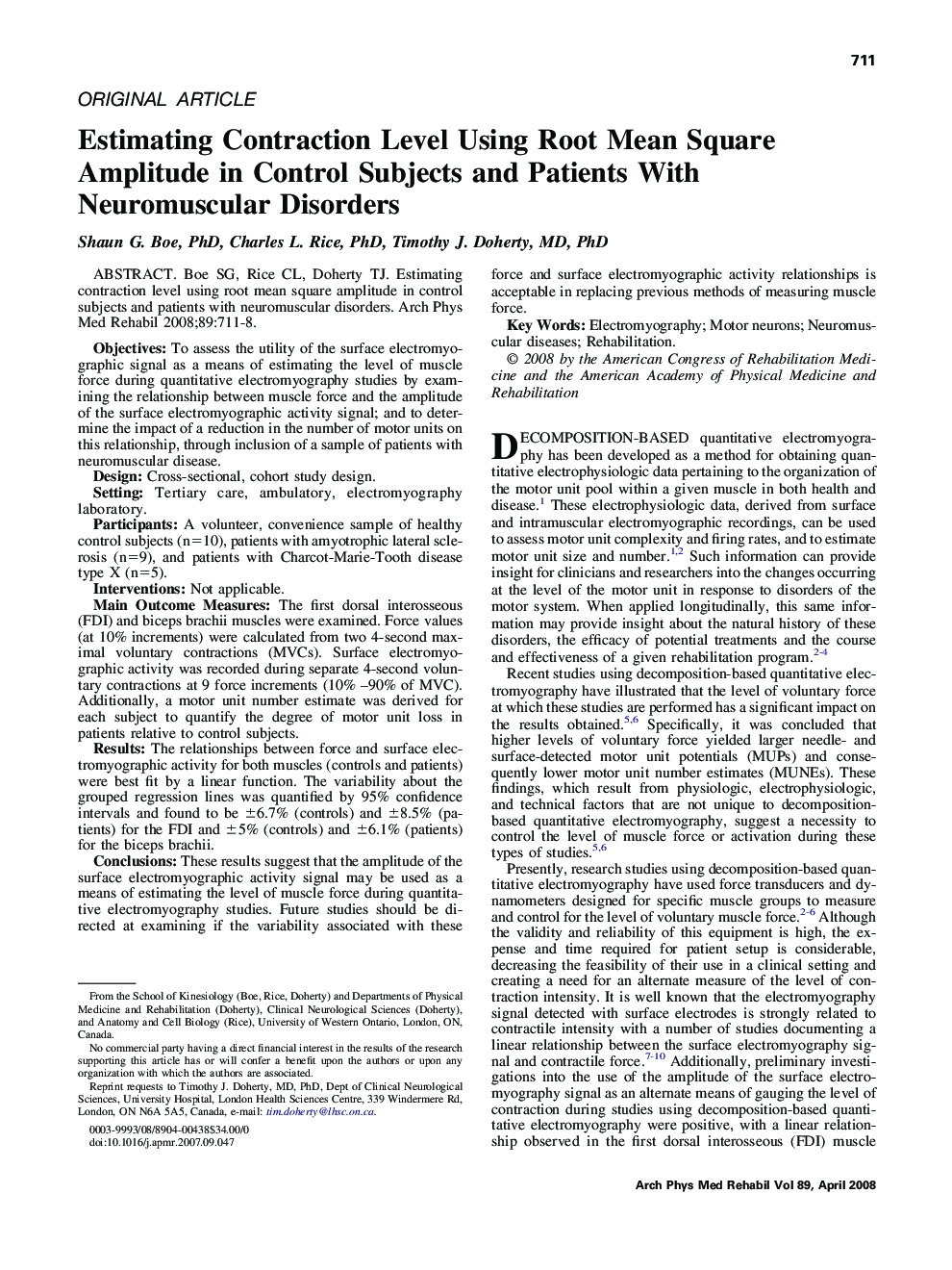| کد مقاله | کد نشریه | سال انتشار | مقاله انگلیسی | نسخه تمام متن |
|---|---|---|---|---|
| 3452336 | 1595780 | 2008 | 8 صفحه PDF | دانلود رایگان |

Boe SG, Rice CL, Doherty TJ. Estimating contraction level using root mean square amplitude in control subjects and patients with neuromuscular disorders.ObjectivesTo assess the utility of the surface electromyographic signal as a means of estimating the level of muscle force during quantitative electromyography studies by examining the relationship between muscle force and the amplitude of the surface electromyographic activity signal; and to determine the impact of a reduction in the number of motor units on this relationship, through inclusion of a sample of patients with neuromuscular disease.DesignCross-sectional, cohort study design.SettingTertiary care, ambulatory, electromyography laboratory.ParticipantsA volunteer, convenience sample of healthy control subjects (n=10), patients with amyotrophic lateral sclerosis (n=9), and patients with Charcot-Marie-Tooth disease type X (n=5).InterventionsNot applicable.Main Outcome MeasuresThe first dorsal interosseous (FDI) and biceps brachii muscles were examined. Force values (at 10% increments) were calculated from two 4-second maximal voluntary contractions (MVCs). Surface electromyographic activity was recorded during separate 4-second voluntary contractions at 9 force increments (10% –90% of MVC). Additionally, a motor unit number estimate was derived for each subject to quantify the degree of motor unit loss in patients relative to control subjects.ResultsThe relationships between force and surface electromyographic activity for both muscles (controls and patients) were best fit by a linear function. The variability about the grouped regression lines was quantified by 95% confidence intervals and found to be ±6.7% (controls) and ±8.5% (patients) for the FDI and ±5% (controls) and ±6.1% (patients) for the biceps brachii.ConclusionsThese results suggest that the amplitude of the surface electromyographic activity signal may be used as a means of estimating the level of muscle force during quantitative electromyography studies. Future studies should be directed at examining if the variability associated with these force and surface electromyographic activity relationships is acceptable in replacing previous methods of measuring muscle force.
Journal: Archives of Physical Medicine and Rehabilitation - Volume 89, Issue 4, April 2008, Pages 711–718